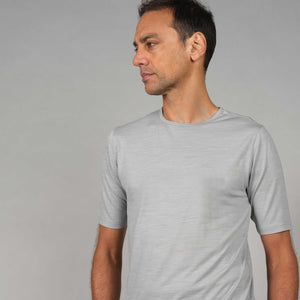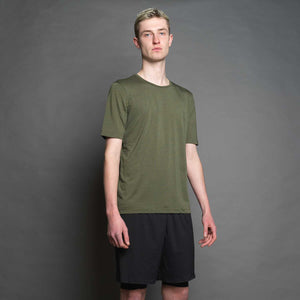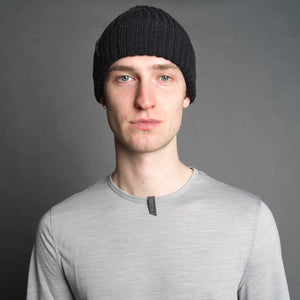Photographer Simon Gill has chased all three Grand Tours and had work published in newspapers including The Times and Guardian. In his spare time, he's also ridden from his home in Hertfordshire to Tromsø in Norway; although, in retrospect, he might have picked the wrong time of year to do so. He's also the man behind ashmei's latest campaign. We caught up with him to chat about the grind and glamour of making it as a professional cycling photographer.
 ashmei: How did you first get into photography?
ashmei: How did you first get into photography?
Simon: After college, I had a load of average jobs including milkman, hospital porter pushing around dead bodies, and working at Butlins. You name a rubbish job, and I've done it. Then on holiday I was travelling around Africa and took some pictures of wildlife and dramatic landscapes on a point-and-shoot camera. When I got home, I had a look at them and thought, wow, I'm really great at this! This obviously wasn't strictly true, but it caught my interest. So I did an evening course in black and white photography, then aged 25, I went off to study photography. Firstly a Higher National Diploma (HND) and then a degree course.
ashmei: How did you first find yourself covering cycling?
Simon: I ended up working for a sports photography agency in London, dealing with bookings and editing. This was 2012. At that time, no one was interested in covering the Tour de France. I needed a holiday and could get accreditation through the company. So off I went for three or four days in the Alps. I had my media pass that allowed you to drive up the mountains. That was the year Wiggins won. The whole thing just took off from there. I was hooked and ended up shooting every Tour de France since, apart from this one.
 ashmei: Tell us a bit about what it's like shooting the Tour de France?
ashmei: Tell us a bit about what it's like shooting the Tour de France?
Simon: I love the atmosphere of it. The craziness and the ridiculous logistics of spending eight or nine hours planning for something that will pass by in a matter of seconds. Sometimes you get something, and sometimes you don't. That's the joy of it. As an accredited person, you're given the same roadbook as the racers, so you can see each stage profile and work out where the interesting stuff is going to happen. There are obvious points, like high mountain passes and things towards the latter part of the day. But if you're clever about it, you can often dip in and out of the race four or five times and still get to the finish for the celebrations of whoever won the stage.
ashmei: How do you manage to get into position?
Simon: You get the magic sticker on your car, which is gold dust as far as getting around. Generally, unless the police are being annoying, you get waved through. You pull up, photograph the riders, and get going again and off the route. Then you can often circle round and rejoin the route before they catch up again. I try to do my travelling in a camper van, so that's my mobile hotel. It's a fairly nippy VW thing and I also do the editing in the back of it.
 ashmei: You've covered every Grand Tour and many of the Classics. Which has been the most enjoyable to photograph?
ashmei: You've covered every Grand Tour and many of the Classics. Which has been the most enjoyable to photograph?
Simon: I've only covered a small amount of the Vuelta, but I had a good run there. It was right at the end of Alberto Contador's career, and he was suddenly a bit happier and more receptive to having his picture taken and speaking to people. He freed himself up and just attacked everywhere. I got him during his last stage win when he just went for it. That was a week in the Basque Country that worked out really well. There was dramatic weather which helps. By comparison, I've never really got on that well with the Giro for some reason. The colour of it is beautiful with all the villages decorating themselves in pink. But I've always been there in rubbish weather, which puts a bit of a damper on it. Out of them all, the Tour de France is always a favourite because I travel with friends to do a podcast. So we always have a nice social time as well.
ashmei: Cycling photographer sounds like a dream job. What are some of the hardships people might not expect?
Simon: Being in a camper van for long periods is an acquired taste. I often travel with the guys from The Cycling Podcast, so I sneak into their hotels and steal breakfast and try and get a shower. Once, I was covering Flanders, and we stayed in a hotel on a boat and I locked myself out of that and couldn't get back in. I had to crawl back into my camper van and sleep under a coat for the night. It's all good fun. However, at my ripe old age, I can manage two or three days in the van and then I have to check into a hotel. Some people are a bit tougher. There are guys that do the whole Tour sleeping in their car in the passenger seat to save a few pennies.
 ashmei: You follow the racing off your own back rather than working for a team or an agency. How does that affect the images you take?
ashmei: You follow the racing off your own back rather than working for a team or an agency. How does that affect the images you take?
Simon: I do send images out to agencies, but I'm not there on a commission. So I'm not under the same pressure. I like to identify something that will work on a day and focus on that rather than dashing around and getting volume over quality. I want to get beautiful and timeless shots, not just individual riders filling the frame. That sort of thing will be interesting for a few days, but eventually, it's just a story that’ll be replaced by the next one.
 ashmei: You also shoot football. How do the two sports compare as a photographer?
ashmei: You also shoot football. How do the two sports compare as a photographer?
Simon: I like the fact that there are no silly laws and restrictions on what you can do with cycling. Because you're out in the countryside, no one can say you can't stand here or you can't do this. Or that you have to sit down at all times like at football matches. As far as what you can do with the pictures afterwards, it's good on that front as well. There are none of the silly Premier League licenses to deal with. Also, it's just so colourful, and there are always so many possibilities. On any given day, even the flat, boring stages, you know, something might happen. Like Chris Auld and his famous shot on the roundabout where everyone just crashed in front of him. He missed getting to the finish, so he shot on the run-in, and lo and behold, they all fell off in front of him. It was like a painting. Every day at the Tour, you have this tingle of excitement that today could be the day that you get that kind of iconic shot.
You can find more of Simon's work here.



